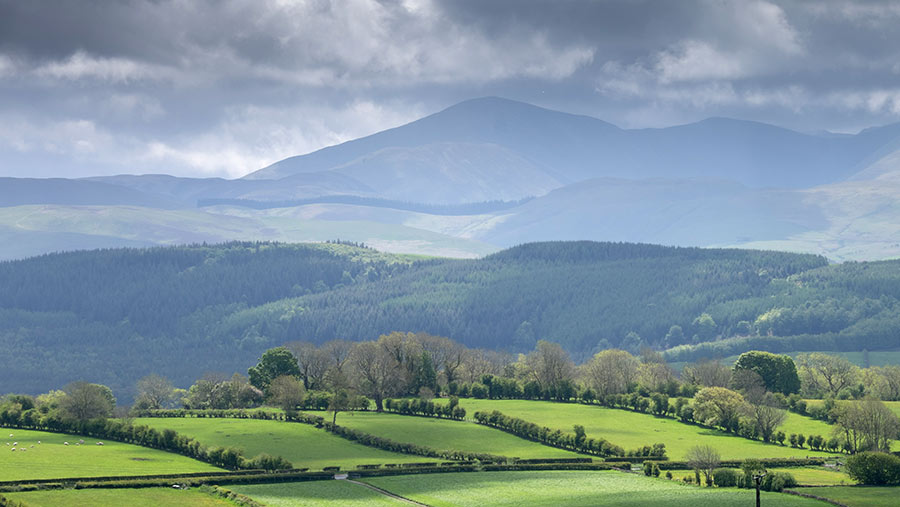Inheritance tax: Why correct Land Registry records are vital
 © Tim Scrivener
© Tim Scrivener Farmers will find it easier to protect inheritance tax reliefs if they first register all land with the Land Registry to establish who owns what within a partnership.
A large amount of farmland is currently unregistered and a lack of clarity can lead to tax planning problems, warns Julie Butler, joint managing partner of chartered accountant Butler & Co.
Difficulties arise because land used by a partnership can be owned by one or more of the partners as individuals, or some or all of the partners as a partnership asset.
See also: Farmer wins Church of England battle over ownership of 16ha
This can have serious implications when it comes to inheritance tax (IHT), as partnership property achieves 100% business property relief (BPR), whereas property held outside the partnership achieves only 50%.
“Tax advisers often find there is lack of clarity on ownership which, not surprisingly, is a necessity for tax planning and the first registration of the land can help with the identification process,” she says.
“To carry out tax planning with wrong ownership details can waste time, money and expectations.”
Strong IHT planning
Establishing each Land Registry title as a separate asset for tax planning purposes allows for strong IHT planning, she says.
For example, if a piece of land has been used mainly for private horses then strictly no IHT relief is allowed on the area associated with that title.
However, if the land has been used for business purposes then full IHT relief will be available.
An important tax planning consideration could be to put the private use on the legal title of the land in question and consider surrendering that to the excepted asset rules, to avoid jeopardising relief on the other legal titles.
“The key point is to have strong IHT planning before death and a full understanding of the nature of the private use, together with the exact ownership so that the farm is structured to achieve full or maximum IHT reliefs whilst allowing full and honest disclosure,” Ms Butler says.
Common pitfalls
- Out-of-date, out-of-scale or unclear plans.
- Failure to complete every part of the application form (and any additional forms).
- Losing documents.
- Incomplete records, making it difficult to establish the extent of rights benefiting the land (for example a right of way over a neighbour’s field) or, vice versa, the extent of a burden (a third party’s right over the land).
- Gaps in the chain of ownership (such as an assent following death which is unsupported by a copy of the will).
Registering land – the process
While on one level the process of registering land is quite simple, farmers will typically find they need professional help, according to lawyer Julie Robinson, head of agriculture with Roythornes Solicitors.
The process involves submitting a registration application form (with fee) to the relevant land registry, which is HM Land Registry in England and Wales, the Land Register of Scotland in Scotland and Land & Property Services in Northern Ireland.
Applicants need to provide evidence of their right to be registered as the owner (usually a good root of title and an unbroken chain of ownership), together with details of rights, interests and claims affecting the land. Additional forms will need to be filled out as directed.
A scale plan of the land with sufficient detail for it to be identified on the OS map is also required – so if existing deed plans are not good enough a new plan will need to be prepared.
“A glance at the application form will tell you that in all but the simplest cases, you will need the help of a conveyancer/solicitor to review your deeds, identify any other interests or registrations affecting the land and make sure everything is in order,” Ms Robinson says.
Timescales
How long an application takes to process depends on how big a backlog the Land Registry has.
At the moment a straightforward application in England will take about six or seven weeks, but complex applications will take longer, particularly if the Land Registry comes back with queries.
It can be the pre-submission work which takes more time as it involves:
- Locating and getting deeds released.
- Checking for gaps.
- Carrying out searches of the “land charges” and “cautions” registers (or their equivalents in Scotland and Northern Ireland).
- Following up on queries.
- Checking whether any of the land has already been registered.
- Arranging indemnity insurance where there are uncertainties.
“If documents are in order and nothing untoward is revealed by the searches, this can be done in short order, but chasing deeds and sorting out problem areas can take weeks or even months,” Ms Robinson says.
Costs and fees
There are two elements to costs – the Land Registry fee, which is based on land values, and professional fees to carry out the work.
Land registry fees are discounted for voluntary registrations (except in Northern Ireland) to encourage them.
In England and Wales, fees for land worth £1m or more would be £680 (but could be more in a large-scale application).
In Scotland, expect fees ranging from £540 to £3,750 for land worth £700,000 to £5m.
Solicitors’ and surveyors’ fees will depend on the complexity of the first registration and what work is needed to clear up any discrepancies that arise.
Disadvantages
It is difficult to argue against having your land ownership guaranteed by the state, says Ms Robinson.
However, some people may prefer to keep details of their land ownership out of the public domain.
